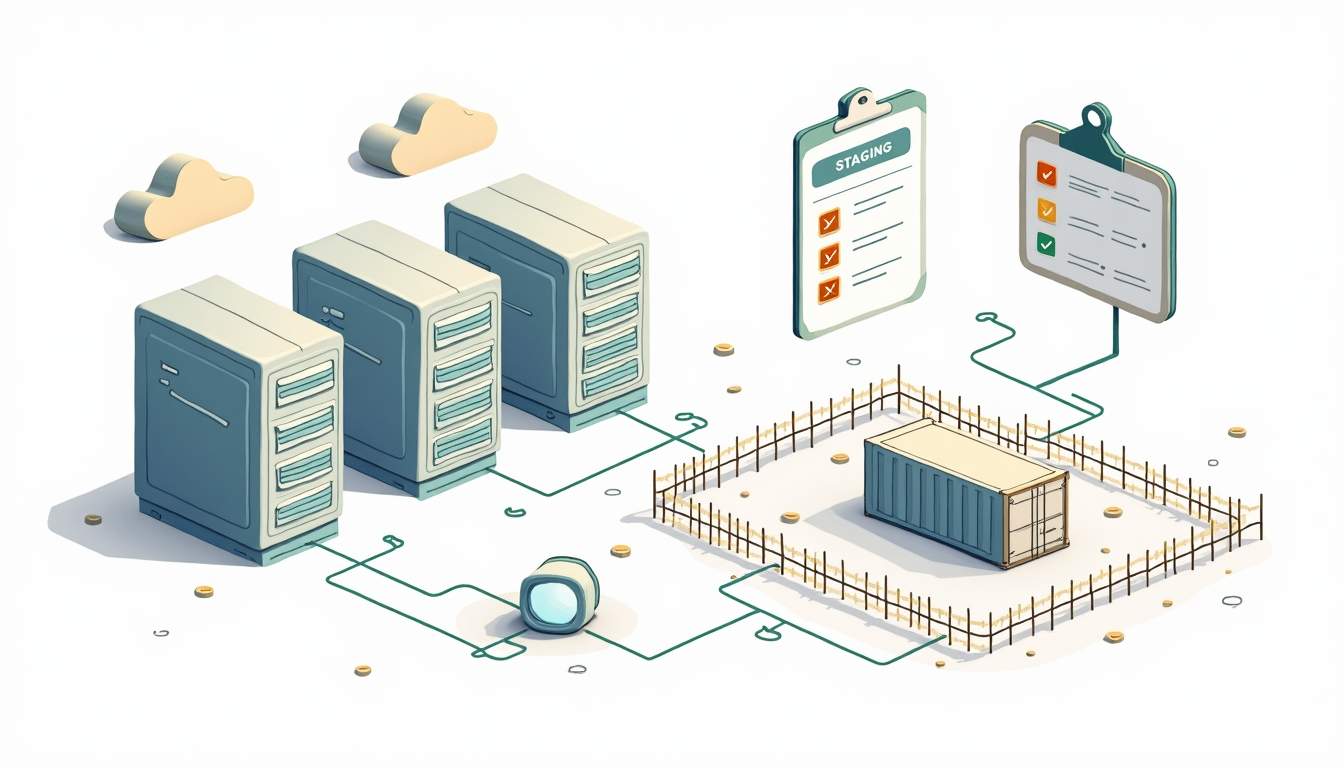n8n Workflow Testing and Quality Assurance Framework
n8n has become a go-to automation platform for teams that need powerful, extensible workflows without the constraints of proprietary automation services. As usage grows from simple one-step integrations to orchestrating multi-system business processes, the need for a repeatable testing and quality assurance framework becomes critical. This article lays out a practical, modern approach to testing complex n8n workflows and establishing a staging environment that mirrors production, with an emphasis on reliability, observability, and developer velocity.
Robust test data management and environment parity are essential for reliable results. Maintain versioned fixtures that represent realistic payloads and state transitions, and seed test databases with snapshots that cover common and edge-case scenarios. Use feature flags or environment-specific configuration to toggle external calls and to isolate side effects. Regularly refresh and prune fixtures to avoid drift from production schemas; incorporate schema validation into tests so that structural changes surface quickly. Secrets and credentials should be injected securely through the CI system or a secrets manager, never hard-coded into test artifacts.
Finally, treat flakiness and performance as first-class concerns. Instrument tests with detailed logging and tracing so intermittent failures can be diagnosed—capture timing, network traces, and retry histories to distinguish transient issues from logic bugs. Implement thresholds and dedicated load or stress tests to detect race conditions and bottlenecks that only appear under concurrency. Feed test results into CI gates and dashboards with actionable alerts so teams can prioritize fixing brittle tests and optimizing slow paths, ensuring the automated suite remains a trustworthy signal rather than noise.
Staging Environment Setup
A staging environment is the bridge between development and production, serving as the place to validate changes under realistic conditions. A well-constructed n8n staging setup mirrors production topology, configuration, and data patterns while preserving safety through masked data and strict access controls. Key aspects include environment parity, test data management, secrets handling, and observability. When staging reflects production closely, it becomes possible to catch environment-specific issues—network latency, authentication differences, or third-party rate-limit behaviors—before they impact users.

Infrastructure Parity and Configuration
Infrastructure parity means running the same components—workflow runner instances, database engines, and queue systems—in staging as in production. Use infrastructure-as-code (IaC) to define environments so changes are reproducible and auditable. Container orchestration with Kubernetes or a managed container service simplifies scaling tests and simulating multi-instance behaviors like leader election or concurrency limits. Where cost constraints exist, prioritize parity for components that materially affect workflow behavior: database type and version, Redis or similar for caching and locks, and the exact n8n version and community or enterprise plugins. Configuration values should be injected via environment variables or a secrets manager; ensure staging uses configuration close to production but points to sandboxed endpoints where available.
Test Data, Masking, and Seeding
Quality assurance requires realistic test data. Seed staging with datasets that mimic production distributions—customer counts, typical payload sizes, and edge cases—so performance and logic can be validated under realistic load. Protect privacy by masking or anonymizing personally identifiable information before loading production-derived data into staging. Techniques such as tokenization, format-preserving masking, and synthetic data generation allow tests to exercise real-world scenarios without exposing sensitive values. Maintain scripts to refresh staging data periodically and to scrub any secrets or personally sensitive material that might have been inadvertently inserted by tests.
Secrets Management and Safe Integrations
Secrets in staging must be handled with the same discipline as production. Use a centralized secrets manager to inject API keys, certificates, and database credentials into n8n instances. Avoid hardcoding or replicating production secrets; create test equivalents or restricted sandbox keys for third-party services. When sandbox keys aren’t available, set strict usage limits and monitoring to avoid accidental breaches. Additionally, implement network policies that restrict staging access to production systems, and ensure that webhooks and callbacks are pointed to test endpoints so that external services do not act on staging traffic as if it were real.
Observability, Logging, and Alerting
Effective staging validation relies on observability: structured logs, distributed traces, and performance metrics. Configure logging to capture node-level outputs and workflow-level metadata, ensuring that traces include correlation IDs to follow a single message through the entire system. Integrate logs with a centralized log aggregator and set up dashboards that mirror production metrics—throughput, error rates, queue backlogs, and execution latency. Alert thresholds in staging should be more aggressive than production to catch regressions early. Also, capture runbooks and contextual explanations with alerts so teams can triage failures efficiently during pre-release checks.
Access Controls, Governance, and Deployment Pipelines
Controlling who can deploy to staging and why prevents accidental releases into production. Implement role-based access controls for n8n editors and deployment tools, and require code reviews and CI checks before promoting changes. Use a deployment pipeline that automates testing: run unit and integration tests on every commit, trigger E2E suites on merge to a release branch, and gate deployments to staging on passing criteria. Maintain an audit trail of changes, approvals, and test results to support compliance and postmortem analysis when incidents occur. Feature flags and canary releases further reduce risk by allowing incremental exposure of workflow changes.
The combination of automated testing and a robust staging environment creates a safety net for n8n deployments. Unit and integration tests catch logic errors early, while end-to-end tests validate business outcomes. A staging environment that mirrors production in critical ways—data patterns, infrastructure, and observability—enables teams to surface environment-specific issues before users are affected. Together, these practices reduce downtime, speed debugging, and support more frequent, reliable releases.
Putting this framework into practice typically yields measurable benefits. Teams report fewer production incidents following the adoption of structured testing and staging, and deployment frequency often increases because confidence grows. When designing an n8n quality assurance strategy, focus on testing the logic that directly influences customer-facing behavior, automating where possible, and maintaining a staging environment that enables safe, repeatable validation. The result is a resilient automation platform that scales with organizational needs while maintaining the agility that made n8n attractive in the first place.
Beyond functional testing, incorporate load and resilience experiments in staging to validate performance and failure modes. Run periodic load tests that reproduce peak traffic patterns and mixed workload scenarios so that autoscaling, database connection pools, and queue backpressure behave as expected. Complement these with controlled chaos experiments—like simulated node failures, network partitions, or elevated latency—to verify that retry logic, dead-letter handling, and failover mechanisms in n8n workflows operate safely under stress. Capture the outcomes in performance baselines so regressions are detectable when dependencies or configuration change.
Finally, treat staging as the rehearsal space for disaster recovery and rollback procedures. Regularly test backup and restore workflows for databases and stateful services used by n8n, and rehearse rollbacks of workflow changes using the same CI/CD tools that perform deployments. Maintain runbooks for common recovery paths and automate verification steps post-restore to confirm system integrity. These drills reduce mean time to recovery and ensure that teams can confidently respond when production incidents occur without surprising gaps between environments.






